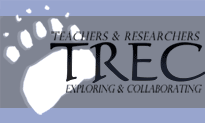 |
|
|
| Author |
Message |
Scott_McComb
Joined: 23 Mar 2004
Posts: 38
Location: Fort Hayes Metropolitan Education Center

|
 Posted:
Fri Jun 18, 2004 6:57 am Posted:
Fri Jun 18, 2004 6:57 am |
  |
The whirlwind started on Tuesday evening as we got our experiment running, fine-tuned the equipment, and prepared for a conference call on early Tuesday morning with some of the students at Amy Clapp’s school. (Amy is a fellow TREC who just returned from her studies on the Lena River in Siberia. Check out her journals at the following URL: http://archive.arcus.org/TREC/phpbb/portal_siberia.php)
On Wednesday morning, we had a good conversation with Amy’s students on a six a.m. conference call. Although 6:00 came early, the conference call was a useful chance for us to share our work with others. (Check out the PowerPoint presentation we prepared if you’re interested! http://archive.arcus.org/TREC/phpbb/viewtopic.php?t=562) The rest of the day went by in a blur (no, not because we were tired… or at least not only because we were tired). We ran through the rest of the day like crazy people. The first day of our three-day experiments was underway and each first day calls for frequent sampling and has LOTS of associated chores.

Here Yo is injecting samples into the gas chromatograph.

Here Yo is testing the acid levels of the solutions, Penney is making sure the solutions we prepared on our second day were ready for us to use, and Amanda is capping the vials that went outside yesterday. I was supervising, i.e., drinking coffee and reading the paper (not really… I was helping Amanda.)

Penney is at the start of the “extraction” process, removing the pollutants from the water. She is carefully measuring the mass of an empty jar, the mass of the jar and water (with pollution), and the mass of the jar and water and hexane, the chemical we use to take the pollutants out of the water. (Bad idea to try in your local stream: hexane is a flammable and poisonous substance.)

HawkLunch tries his hand at injecting the “extracted” pollutants into the gas chromatograph, and gets smashing results.

Science is SO interesting!
By the way, I got a Super Smelling Scientist award yesterday. (No, I’m not clean as a whistle… no one here is; we’re hundreds of miles from civilization!) While we were preparing samples, I noticed a chemical-y odor coming from the jar into which we were pouring our sample; our sample jar had been cleaned but not thoroughly rinsed: mon Dieu! The methanol left in jar could have ruined our experiment! My nose saved the day and three experiments!
Amanda, Yo and Penney have been gracious teachers at each step of the process, patiently explaining and modeling good lab protocol… Every step of the process has special procedures, even (perhaps even especially) washing dishes! More about this in a later post.
On Wednesday, Amanda and Penney also helped me write the detailed procedure for an experiment for which I will be responsible. I am STILL amazed at my team’s dedication to the pursuit of knowledge, willingness to help and teach, and all-around generosity of spirit.
As the work day drew to a close yesterday (18 hours after it started), Amanda, Penney and I started a friendly game of Scrabble and Yo went fishing.

(The fish is over 50 cm (20 in) long!)
Today we caught up on testing samples, washing dishes and responding to emails. I also learned to use the gas chromatograph (and gained a whole new appreciation for the sophistication of the technology used).
Interesting Fact to Make You Smarter:
If you like looking for Waldo, you’ll appreciate the following: the gas chromatograph we are using is sensitive enough to detect one gram of pollutants in 1,000,000 liters of water: one itty-bitty, tiny, eensy-weensy gram in 1,000,000 liters (300,000 gallons). I bet you still don’t have a picture of what that looks like:
Take a transparent die (one of a pair of dice) and throw it in the water of one of 10 large swimming pools. Now, find the die.
Our gas chromatograph could. That’s cool!
If you’re trying to impress your friends, talk about the sensitivity like the scientists: micrograms per liter (micro- 1/1,000,000 or one-one millionth, gram – the mass of about one quarter sheet of paper, liter – half the size of a two-liter bottle (duh))
Amanda's Limerick
Editor's note: this limerick was written at the start of our stay here.
Penney, Scott, Amanda and Yo
Are cool scientists, always on the go
They brave the weather
And work well together
Even when spirits are low. |
_________________
~Scott |
|
    |
 |
|
|
|
View next topic
View previous topic
You cannot post new topics in this forum
You cannot reply to topics in this forum
You cannot edit your posts in this forum
You cannot delete your posts in this forum
You cannot vote in polls in this forum
You cannot attach files in this forum
You can download files in this forum
|
Powered by phpBB 2.0.11
© 2001, 2002 phpBB Group :: FI Theme ::
All times are GMT
| |
